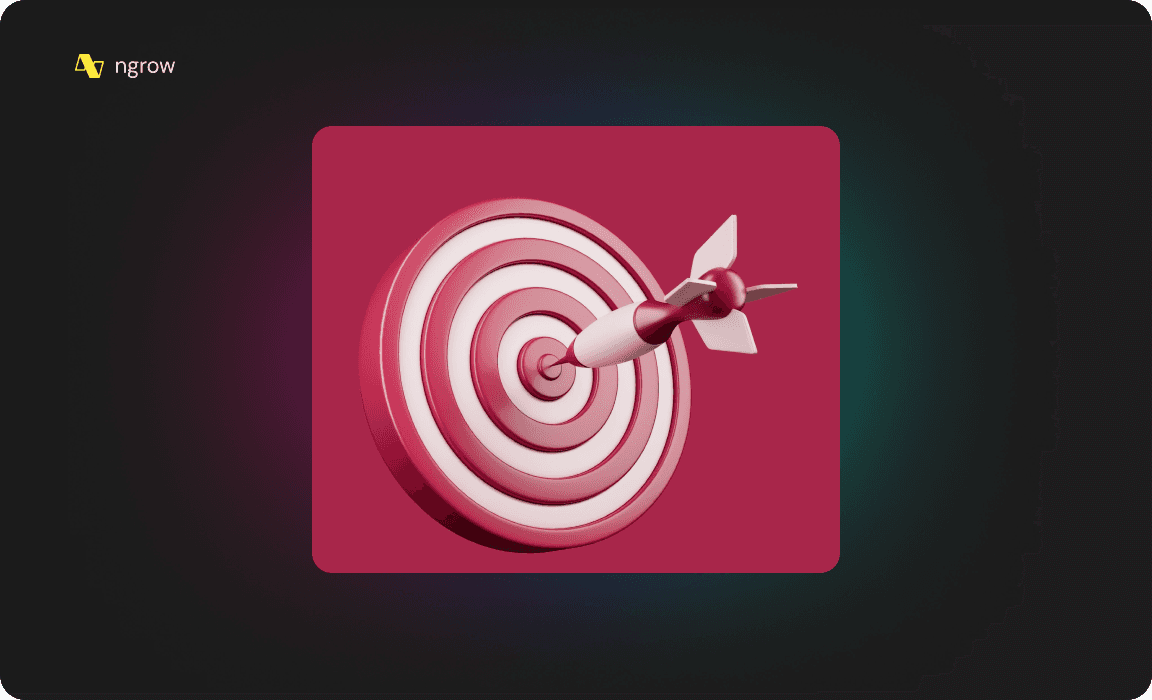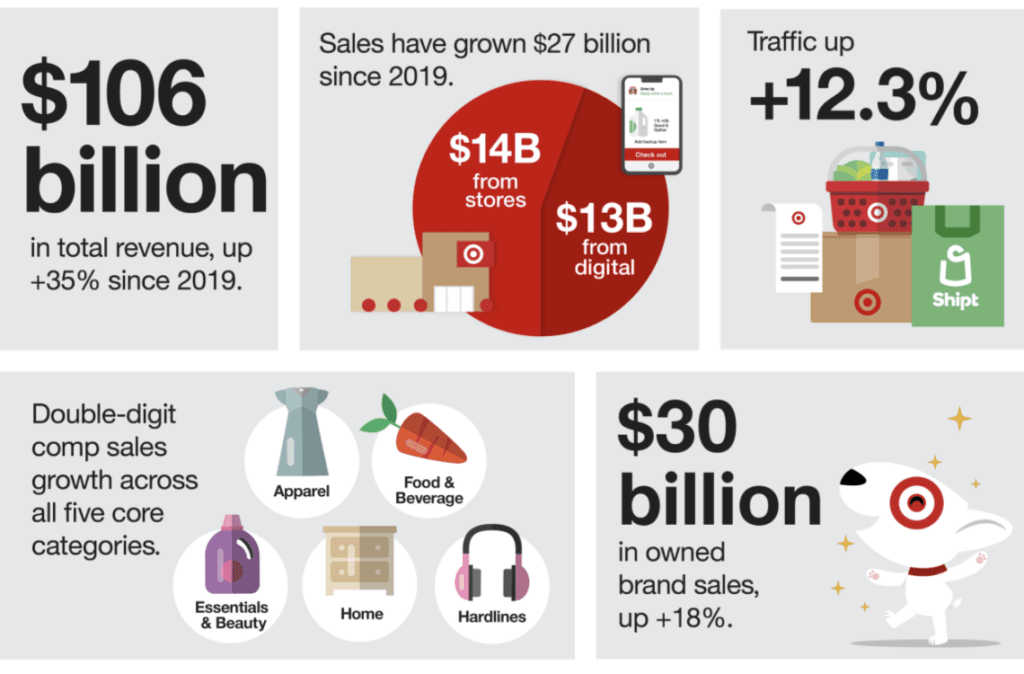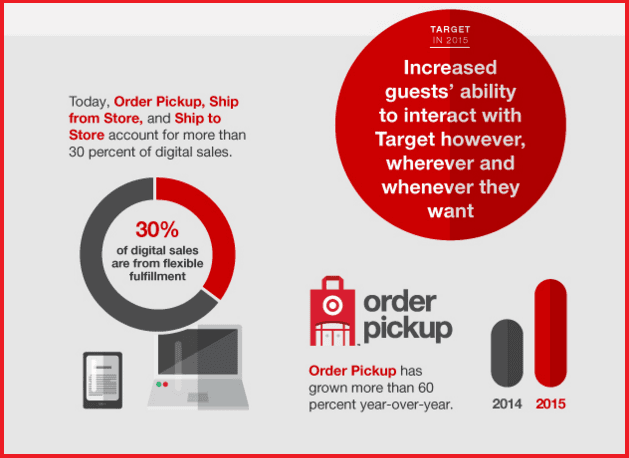3
min to read
May 22, 2024

How Target's Omnichannel Marketing Drives Customer Satisfaction and Loyalty
In today's competitive retail landscape, providing a seamless and satisfying customer experience across multiple channels has become a critical factor in determining a brand's success. Target, the popular retail chain, has been at the forefront of omnichannel marketing, leveraging its physical stores, online platforms, and mobile apps to create a unified and engaging customer experience. By integrating these touchpoints and leveraging data-driven insights, Target has been able to drive customer satisfaction, increase loyalty, and maintain its position as a leading retailer.
Understanding Omnichannel Marketing

Omnichannel marketing is a holistic approach to customer engagement that focuses on providing a consistent and integrated experience across multiple channels. This includes seamlessly connecting a brand's physical stores, websites, mobile apps, social media channels, and customer service to create a unified brand identity and customer journey.
The key to successful omnichannel marketing lies in leveraging data and technology to track customer interactions and preferences across channels. By analyzing this data, brands can gain valuable insights into customer behavior and tailor their marketing, sales, and service efforts to better meet the needs and expectations of their target audience.
Target's Omnichannel Approach
Target's omnichannel strategy is a prime example of how a brand can create a unified customer experience that drives satisfaction, loyalty, and sales. Let's explore the key elements of Target's approach:
1. Integrated Store and Online Experience
Target has successfully integrated its physical stores with its online platform to create a seamless shopping experience for customers. Whether customers prefer to shop in-store or online, they can access the same product offerings, promotions, and loyalty benefits.
Customers can use Target's website or mobile app to browse products, check store availability, and even place orders for in-store pickup or delivery. This integration allows customers to easily move between channels and access the information they need to make informed purchasing decisions.
2. Personalized Recommendations and Offers
Target leverages customer data and purchase history to provide personalized product recommendations and targeted offers. This includes highlighting products that align with a customer's previous purchases, suggesting complementary items, and offering exclusive discounts based on their shopping behavior.
By providing personalized recommendations and offers, Target enhances the customer experience and increases the likelihood of customers making additional purchases. This data-driven approach also helps Target to optimize its product assortment and marketing efforts to better meet the needs of its target audience.
3. Convenient Fulfillment Options
Target offers a range of convenient fulfillment options to meet the diverse needs of its customers. In addition to traditional in-store shopping, customers can choose to have their purchases shipped directly to their home or office, or opt for in-store pickup or curbside delivery.
Target's Drive Up service, in particular, has been a hit with customers, allowing them to place an order through the Target app and have their items brought out to their car by a store associate. This convenient and contactless fulfillment option has been especially popular during the COVID-19 pandemic, demonstrating Target's ability to adapt to changing customer needs and preferences.
4. Loyalty and Rewards Program
Target's REDcard loyalty program is a key component of its omnichannel strategy, offering customers exclusive benefits and rewards for their loyalty. Members of the REDcard program receive a 5% discount on most purchases, free shipping on Target.com orders, and extended returns windows.
The REDcard program also integrates with Target's mobile app, allowing customers to easily access their account information, track their rewards, and redeem offers on the go. By offering a compelling loyalty program that spans multiple channels, Target encourages repeat business and fosters a sense of brand loyalty among its customers.
5. Continuous Optimization
Target continuously tests and optimizes its omnichannel strategy to ensure maximum effectiveness. The company analyzes customer data and feedback to identify areas for improvement and drive continuous innovation across its channels.
For example, Target may use A/B testing to experiment with different website layouts or mobile app features, and then analyze the results to determine which options drive the highest levels of engagement and conversion. By continuously refining its approach based on data and customer insights, Target ensures that it remains responsive to the evolving needs and preferences of its target audience.
The Impact of Target's Omnichannel Strategy

Target's omnichannel strategy has had a significant impact on the company's success and reputation as a leading retailer. Here are some key outcomes of Target's approach:
1. Increased Customer Satisfaction and Loyalty
By providing a seamless and personalized customer experience across multiple channels, Target has been able to drive high levels of customer satisfaction and loyalty. Customers appreciate the convenience, personalization, and value that Target offers, leading to repeat business and positive word-of-mouth recommendations.
2. Higher Sales and Profitability
Target's omnichannel strategy has also contributed to the company's strong financial performance, with the retailer consistently reporting strong sales and profit margins. By offering a wide range of products and services across multiple channels, Target has been able to drive sales, attract new customers, and retain existing ones, ultimately boosting its bottom line.
3. Competitive Advantage
Target's strategic approach to omnichannel marketing has given the company a significant competitive advantage in the retail industry. By offering a personalized and engaging customer experience that is consistent across all touchpoints, Target sets itself apart from its competitors and reinforces its position as a market leader.
4. Continuous Innovation and Adaptation
Target's success in omnichannel marketing is also attributed to its continuous innovation and adaptation to changing consumer preferences and technological advancements. By staying ahead of the curve and exploring new ways to engage with customers, Target remains a leader in creating seamless and engaging customer experiences.
Best Practices for Driving Customer Satisfaction and Loyalty Through Omnichannel Marketing
Target's omnichannel strategy offers valuable lessons for businesses looking to drive customer satisfaction and loyalty through integrated marketing efforts. Here are some best practices to consider:
Prioritize Consistency: Ensure that your brand identity, messaging, and customer experience are consistent across all touchpoints, from physical stores to online platforms and mobile apps.
Leverage Customer Data: Use data and technology to personalize the customer experience, offering tailored recommendations, promotions, and services based on individual preferences and needs.
Offer Convenient Fulfillment Options: Provide customers with a range of convenient fulfillment options, such as in-store pickup, curbside delivery, and home shipping, to meet their diverse needs and preferences.
Implement a Compelling Loyalty Program: Develop a loyalty program that offers exclusive benefits and rewards to encourage repeat business and foster a sense of brand loyalty among customers.
Continuously Test and Optimize: Use data and customer feedback to continuously test and refine your omnichannel strategy, identifying areas for improvement and driving continuous innovation.
In conclusion, Target's omnichannel marketing strategy serves as a shining example of how retailers can drive customer satisfaction and loyalty through integrated and data-driven marketing efforts. By prioritizing consistency, leveraging customer data, offering convenient fulfillment options, implementing a compelling loyalty program, and continuously optimizing, businesses can create seamless and engaging customer experiences that set them apart from their competitors and position them for long-term success in the retail industry.



